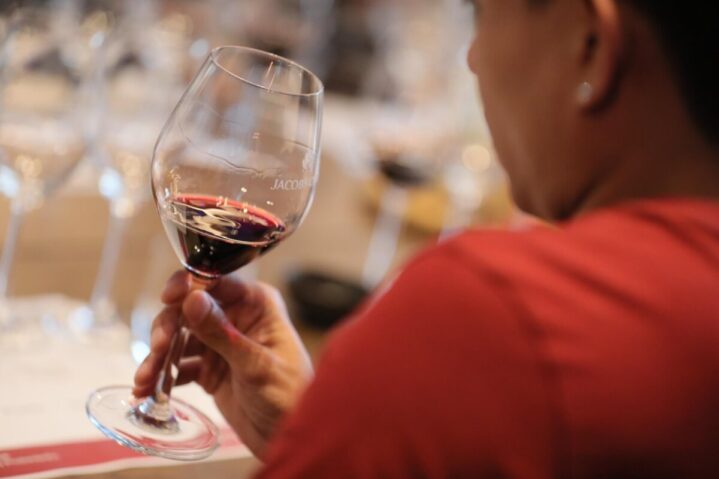
Introduction to the World of Wine
by Billy Brigham
Wine! What exactly is it? Where does it come from? And where is it going to be in the future? These are the questions I find myself answering the most often as a Wine Ambassador.
Let’s start with: What exactly is wine?
Wine is defined as an alcoholic beverage made from fermented wine grapes. However, wine can be made from any fruit, but wine grapes are most commonly used. Wine grapes are slightly different from your regular table grapes from farmers markets or shops. They are smaller in size, contain more bitter tasting seeds, have thicker skins, and are sweeter in taste. All these factors contribute to the flavourful wines you know and love. By crushing the wine grapes, we can extract the sweet juice inside, then by adding yeast, the fermentation process occurs! The yeast will eat the sugars converting it into alcohol after a few additional steps, your wine is ready to enjoy.
Now that we know how wines are made let’s discuss the different types of wines. There are many different types, because of the different grape varieties. You may notice many of these when walk down the wine aisle and see Pinot Noir, Riesling, and Shiraz. All these grape varieties, whether red or white, can be traced back to one species of grapevine, the Vitis Vinifera. Each wine producing country tends to plant a different variety of the Vitis Vinfera, which is how there are thousands of different grape varieties around the world. When you think of Spain, most people think of Tempranillo, for France, Pinot Noir, and Australia, Shiraz. But the most planted red grape variety in the world, is the Cabernet Sauvignon grape with approximately 340,000 hectares (840,000 acres) planted globally. Some of the most well known regions for planting Cabernet Sauvignon include: Bordeaux, France; The Coonawarra, Australia; and Napa Valley, USA. While it is not surprising to hear Cabernet Sauvignon is the most largely planted red grape variety, many wine enthusiasts, myself included, would be surprised to find out the most planted white wine variety isn’t Chardonnay or Riesling, or even Sauvignon Blanc but Airén with 218,000 hectares (538,700 acres). It is planted almost entirely in Spain, and is used to make brandies, sherries and still white wine that is consumed almost entirely domestically.
Where does it come from?
To start, let’s go back to the very beginning. The first traces of wine can be found around 6000BC in Georgia. People shifted away from the nomadic lifestyle and wanted a more stable living place. This allowed for more experimentation with food and drinks – and ultimately, the creation of wine. Fast forward a few centuries, and the ancient Greeks were using wine as a tool for worship, which later carried on to the ancient Romans. As time went on, the way for producing wine improved, and the places growing vines expanded. During the medieval era, wine became a common social beverage for all, partially to its links to religion and heavy production from Benedictine monks. The monks had vineyards all over France and Germany, including, Burgundy, Bordeaux, Champagne and Frankfurt. One famous Benedictine monk, Dom Perignon, was the first to discover how to make bubbles in wine through a second fermentation. With this discovery he accidentally created what we now know as Champagne.
For many centuries, places like France, Germany, Spain, Italy and Greece have been the biggest producers of wine. They have created many traditions about how to produce and grow their wines. Specifically, they are very particular on the type of barrels, minimum time for ageing, and grape varieties allowed to grow in certain regions. These rich traditions, which have largely remained unchanged, awarded these countries the title of ‘Old World’ wines.
As the world’s footprint began to expand with the British, Spanish, and French colonies, the desire to have wine in these colonies also grew. Places such as the United States, Chile, Argentina, Australia and New Zealand all began producing their own wines. Soon enough these countries became very good at growing different varieties and developing their own styles and techniques. Since they were new to making wine, they didn’t have these set traditions and rules to follow, which allowed them to be innovative and experimental with new ideas. The prime example would be the screw cap instead of the traditional cork. A screw cap seals the bottle better, keeping the oxygen out and allowing the wine to stay fresher for longer. Almost all wines with a screw cap will originate from a New World country. Additionally, the New World wines are releasing more innovations wine into the category. For example, Australia’s Jacob’s Creek experimented with ageing wine in matured whisky barrels, and in 2014 released the Jacob’s Creek Double Barrel Shiraz a wine matured in Scotch whisky barrels, making them first in the world to do something like this. In New Zealand and -America, the growing trend of wine in a can, for a more transportable and sustainable packaging, has started to soar. All of these innovations are allowed in the New World of wine but are against the traditions of the Old World.
Where is it going to be in the future?
One of the things that I love about wine is that it is continuously changing and developing, particularly people’s perceptions and consumption methods. In recent years wine has changed from being the formal drink your parents would consume on a Sunday night, to the fun and social drink younger people prefer. One of the biggest growing trends in the wine industry has been related to the craze of Rosé, heavily driven by younger drinkers in their mid 20s to 30s. Rosé has also been amplified by big A list celebrities releasing their own wine labels, like rapper Post Malone, actor John Malkovich, and pop star Kylie Minogue. When before the wine of choice may have been a bold red or oaked white, people’s choices have led to new styles and varieties being produced that are lesser known.
Not only are the styles of wine changing, but so are the ways we consume them. Wine has often been a traditional drink served with a meal, but the growing trend of wine cocktails is adapting those traditions. Wine cocktails are a new take on a traditional cocktail, with a wine being its base. This new way of drinking wine has seen huge growth due to Covid-19 lockdown measures, with more people spending time at home concocting their own drinks. Many took the opportunity to post their new creations online helping boost the trend and is likely to be one that we will be seeing a lot of in the future!
Wine has a long history in our shared cultures and is continuing to grow in all different ways. But one staple value of wine that has remained the same, is that wine is meant to be shared. The foundations of wine are built to bring people together. Wine most commonly comes in a 750ml bottle, not just to look nice, but because it is the ideal amount to share with friends, therefore making people come together. Although the wine varieties we drink may change over time, the way drinking wine may change, even the regions where we get our wines from may alter, but one thing that will always remain the same is that wine will always be made for sharing.







